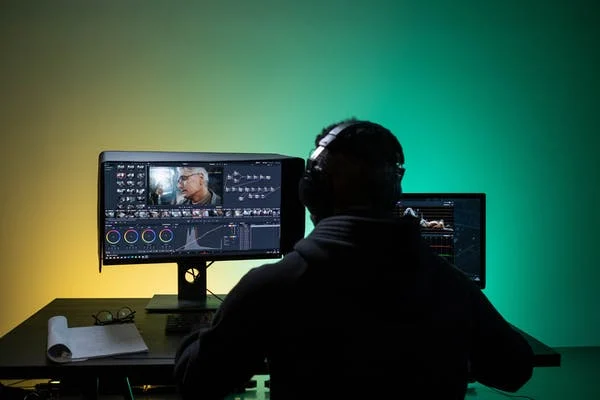Post Production Editing in 5 Simple Steps
Most people are familiar with video editing. But the same can’t be said about the nuances of post-production editing.
Post-production editing is a component of the video production process in which footage is connected into a whole that is greater than its parts. Post-production editing also includes the implementation of sound effects, voiceovers, visual effects and music. The final combination of carefully edited video and audio resulting from the post-production editing process is the content that is aired on Connected TV.
Post-production is best thought of as the capstone of the endeavor that was creating video footage for marketing purposes. Pay close attention to the connected tv ad specs when planning, creating and editing your ad and you’ll rest easy knowing all of the hard work you put into this project does not turn out to be in vain.
Without further ado, let’s take a quick look at the five most important steps of post-production editing that pave a path toward a final piece you are proud to put on streaming services.
Contents [hide]
Post-Production Editing
Step #1: Content Editing
The post-production process commences with precise editing. To be more specific, image editing is performed to bring out the best in the content’s theme, plot and story components. Footage from filming sessions is connected into a coherent story with a clearly defined beginning, middle point and conclusion.
The post-production editor goes over the script, analyzes the footage and connects that footage together from individual pieces into a logical whole that ultimately serves as a cohesive story. Though some of the video captured in the filming process is cut, all that matters is that the editing process moves forward with a coherent whole that is the ad, albeit one that is still a work in progress. The editor generates the initial cut, edits are made and eventually the final ad is created. The editing process has the potential to take a couple weeks or even several months.
Step #2: Implementing Music and Sound Edits
Now that the film editing is complete, it is time to shift our attention from the video to the audio. Seize the opportunity to improve the sound with the addition of sound effects, a soundtrack or background music. Eliminate background noise and sync up the dialogue along with other audio components to jive with the storyline, creating a polished whole that feels as though it was filmed in a seamless manner.
Step #3: Strategically Incorporate Visual Effects
Engineers and artists create visual effects with software programs that make otherwise bland video pop that much more. These professionals have the tech tools at their disposal necessary to generate effects that would otherwise not be possible. These unique effects ultimately take the ad to the next level in terms of visual impact. So don’t hesitate to film some scenes in front of a green screen and add in effects thereafter. There is always an opportunity to bring out the visual splendor with the incorporation of visual effects during the post-production editing process.
Step #4: Mixing the Audio
Sound mixing has the potential to chew up your time and energy so approach this step of the post-production editing process carefully. Sound mixing requires attention from sound editors who alter audio and film. As an example, instead of adding in music and sounds, a sound editor will mix the audio to address subtleties such as faint talking that can be heard when music plays. Sound mixing the piece also centers on leveling out the volume of the audio so it is consistent throughout the video.
Step #5: Color Grading
Color editors are responsible for transitioning through the video one frame at a time to set the color just right. Color is especially important as it sets the visual tone of the content. As an example, it might be best to use bright colors in the video to invoke feelings of happiness and curiosity. Alternatively, if the ad has a comparably somber setting, darker hues will be used to establish the dour mood.
Precise color grading generates consistency throughout the filming process, ultimately creating a truly unified and convincing look and feel for the piece. Take full advantage of the post-production tools on the market ranging from Final Cut Pro to Adobe Premiere Pro, Adobe Audition and Apple Logic Pro X, tap into the expertise of the industry’s best connected TV advertising service and it won’t take long for your ads to make a meaningful and lasting impact on your target audience.



